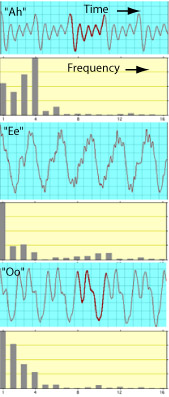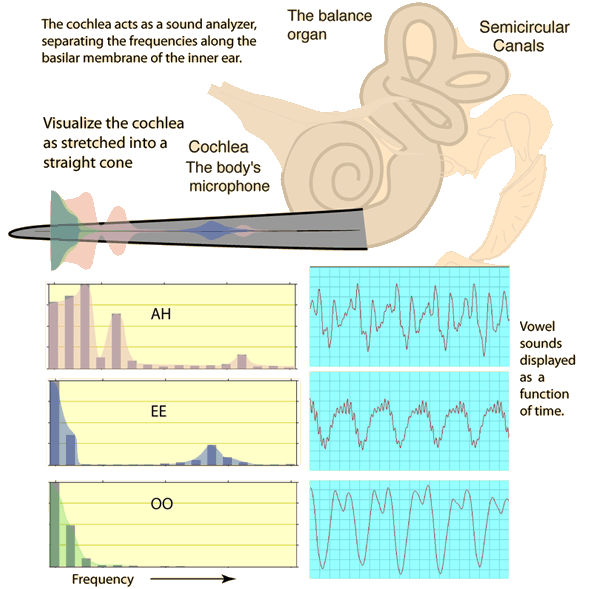Vowel Displays as a Function of Time and Frequency

|
The examination of the distinguishable sound quality or timbre of vowel sounds is aided by two different types of displays of the sound. The display of the sound image as a function of time shows that the waveforms of the three vowel sounds are distinctly different. This is the most common type of display as captured by an oscilloscope or a computer display. The second type of display shows the sound image as a function of frequency. This is an example of Fourier analysis, and these displays that show the amount of signal associated with each harmonic of the sound signal are called fast Fourier transforms, or FFTs. The FFT provides a way to quantify the differences in the harmonic content of the vowel sounds, and provides some insight into how the ear distinguishes these vowel sounds. With the insight provided by the place theory of pitch perception, it can be seen that the human ear's analysis of sound quality bears some resemblance to an FFT. |
These displays were created with MacScope2 by Elisha Huggins.
| Relate these displays to what is happening in the ear. |
Voice concepts
Musical instruments
Reference
Benade
Ch. 19
| HyperPhysics***** Sound | R Nave |
